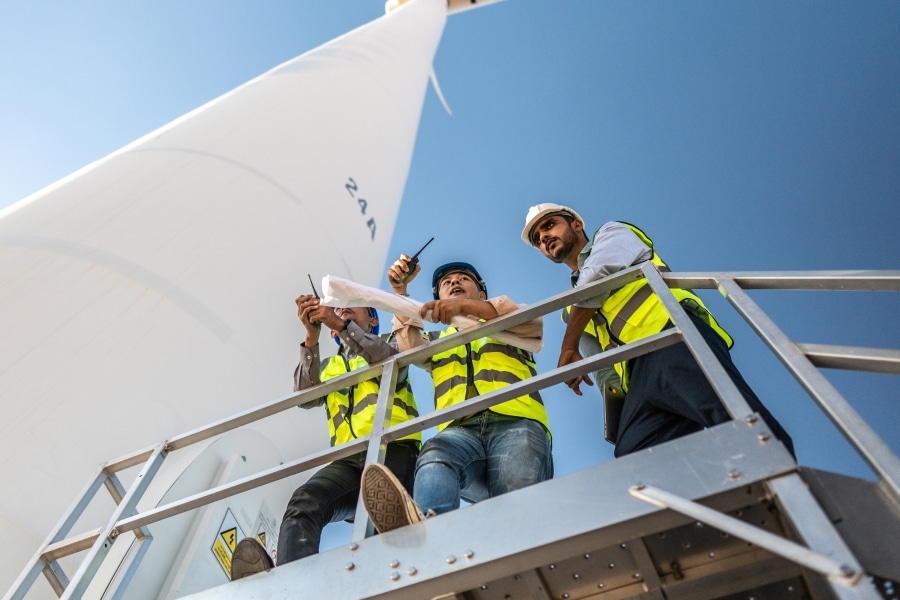Illustration by Dalbert Vilarino
Construction jobsites can be ever-changing, chaotic places, where daily schedules are in flux, dependent on good weather, on-time materials and an army of subcontractors who work separately but in concert and in precarious situations.
“In a perfect world, it’s a well-oiled machine,” said Chad Czerwinski, a project superintendent with Pepper Construction Group in Illinois. But it doesn’t always work that way. Mistakes happen, balls are dropped and, with so much money at stake, conflicts boil to the surface. “One of the hardest parts is just getting everybody to play nice in the sandbox,” Czerwinski said.
And when daily squabbles emerge or long-simmering feuds fester, those interpersonal conflicts often turn into more than just annoyances. They can lead to accidents, reduced productivity, absenteeism, turnover and, in some cases, expensive litigation and arbitration.
Not every disagreement is avoidable. But it is possible to head many off when leaders model soft skills, including the ability to listen and collaborate, and build a culture where working well with others is encouraged.
“When there are interpersonal issues, it impacts everything, not just the people involved in the conflict, but the people they pull in,” said Kimberly Prescott, president and founder of Prescott HR, a human resources consulting firm in Maryland. “It becomes a snowball.”
How problems turn to disputes
Workplace squabbles are costly, regardless of the industry. A CCP Global Human Capital report estimated that, in 2008, dealing with conflict cost U.S. employers $359 billion. In construction, the same story plays out, according to a report by Julie L. Brockman, an associate professor in the School of Human Resources and Labor Relations at Michigan State University.
Brockman analyzed 41 conflicts on construction sites and found that the average cost of each incident reached nearly $11,000 and required an average of 161 hours, or about 20 work days, to manage.
Those conflicts aren’t usually prompted by a hot head, Brockman found. Instead, the triggers for disputes often occurred because of a safety issue, missing equipment, coordination of trades or concerns about workmanship, for example. Frustration with the system then sparked friction between workers.
“Conflicts oftentimes start where there is a problem to be solved,” she said. “It’s when it becomes personal where the problem turns into conflict.”
When talking informally to people in the construction industry about the top skills that would improve sites, Brockman said two soft skills—communication and interpersonal skills—are usually among the top five. But there’s often little investment in training programs that could cultivate them. “Partly because of the low profit margins, it’s a very competitive industry,” she said. “So, they have to really pick and choose what they want to focus on.”
Soft skills are different from the hard skills, such as certifications or mechanical knowledge, that are usually listed in job descriptions. Instead, they cover the traits that describe how an individual relates to others. That includes open-mindedness, critical thinking, problem-solving, organization, effective communication and, perhaps most important, empathy.
These are typically innate qualities that are hard to teach, Prescott said. But it’s not a lost cause. “I do believe that we can foster the strengths that people have,” she said.
Here are four ways to build workplaces where soft skills are promoted and head off disputes before they turn confrontational—and costly.
Start at the hiring phase
Some jobs require active listening, attention to detail and the ability to focus. Others require creativity, teamwork and collaboration. In job descriptions, include both the hard and soft skills needed, Prescott said. And during the interview process, don’t just ask prospects about themselves; let them know how your company operates and what is expected of workers.
“The more information you give, the more introspective that person can be in their deliberation on whether or not they think that that job, based on the things they know about themselves, will be a good fit for them,” she said.
Set a tone from the top down
On a site a couple years ago, Eugene Mason III, a project superintendent in Illinois, crossed paths with a truck driver making a delivery. “He pulled me over and was like, ‘Dude, how in the heck does this site seem so peaceful. I have never pulled up on a site like this before,’” Mason remembered. “It tripped me out … It’s like every other site. It’s hell. It’s a living nightmare because it’s construction.”
The difference, Mason said, is that he doesn’t lead with a one-way-or-the-highway mentality. Instead, he encourages communication and respect. He welcomes input from others on the job, so they have a shared ownership of the entire project. And he sets the tempo with foremen so that tone trickles down to everybody.
“When you come in as a superintendent and you just bum rush everyone with control, everybody goes shut into their individual silos,” Mason said. “And so I initially establish an environment for respect and communication.”
Look for problem areas
Brockman’s research found that squabbles typically arise because of problems in a site’s processes. Those conflicts are best resolved quickly and with the initial individuals involved. So, look for areas where those primary triggers—such as safety issues, equipment concerns or scheduling—pop up and find ways to resolve them.
On sprawling sites, superintendents can’t be everywhere to witness every dispute emerge, so it’s important to teach workers how to identify them, Brockman said. If a training program isn’t possible, share tips during regular safety talks. “Take five minutes and talk about how conflict can proliferate and what to look for,” she said.
Counsel, mentor and trust
When there are disputes, it’s time for a conversation. And leaders must demonstrate why their way will lead to a better outcome, Czerwinski said. When handling disagreements, he keeps his emotions in check, puts on a poker face and listens. “You have to do that in a way that shows the person that this isn’t just a better way to do it, but it’s going to help you get to what you want as well,” he said. Trust is critical, too, Czerwinski said. “If the people that work with and for me believe that they have my trust, I believe it impacts every aspect of what they do,” he said. “That’s going to affect their willingness to go the extra mile and continue to do things they feel value for. And I think that is a skill worth cultivating in everybody.”












